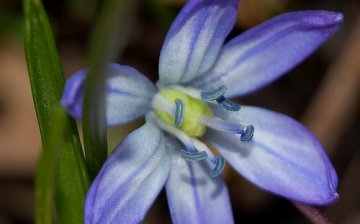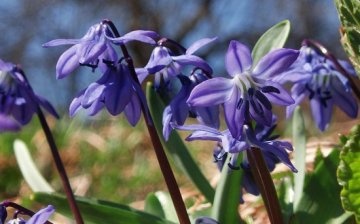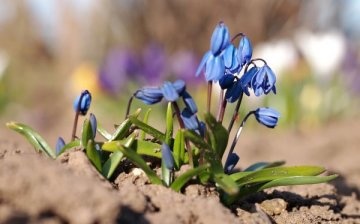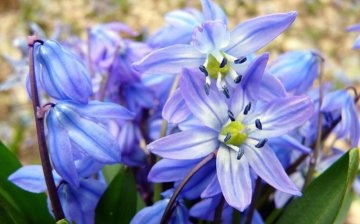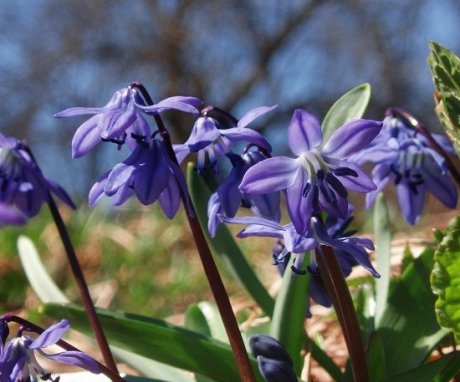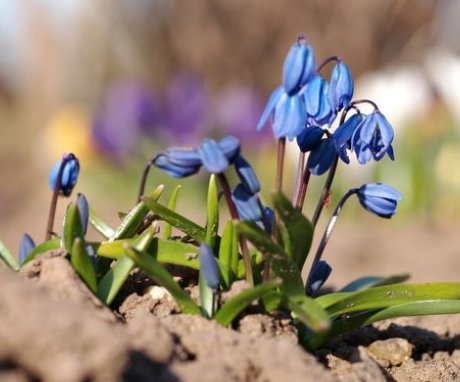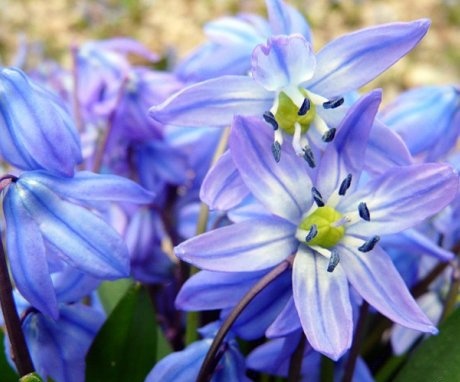Siberian Proleska: description and features of cultivation
After a long winter, gardeners look forward to the truly warm spring days. They want to quickly admire the Siberian Proleskaya - one of the most beloved primroses.
Content:
Siberian Proleska: description of the plant
The flower is a representative of the genus Scylla, the Asparagus family. In the past, botanists ranked it as family Hyacinth or Liliaceae. Siberian scrub is a perennial, bulbous plant. This explains the origin of the word "scilla" (in ancient Greek - "sea bow").
Hearing the name of a flower, one can make an assumption about its wide distribution in Siberia. When describing the first species, the natural range of the plant was incorrectly indicated. Later, the inaccuracy was corrected, but the name stuck. In nature, Scylla is found in European forests, in the Caucasus, southern Russia, Turkey, but in Siberia it cannot be found.
Siberian beetle is a typical ephemeroid. Its aerial part only lives for a few weeks. During this period, she manages to please with flowers and form seeds. The plant then disappears until the next spring. In early April, 3-4 glossy green leaves up to 15 cm long appear from under the ground. At the same time, peduncles (up to 20 cm high) are thrown out, which droop under the weight of blue-blue flowers. Their diameter is 2-4 cm. On the stem there are from 1 to 5 buds.
Scylla are distinguished by their unpretentiousness and generous flowering.
They will feel fine without any care. They will even spread to new areas in the garden. Siberian Proleska is a popular primrose among gardeners, which also looks great in unkempt areas.
How to propagate Siberian spit?
The plant is easy to cultivate using seeds and bulbs. It will not suffer from transplanting even with fully formed buds. Often illiterate gardeners bring flowering scyllas from the forest along with bulbs and place them in their flower beds. However, they absolutely do not take into account the biology of the species.
The plant's bulbs are small, approximately 2-3 cm in diameter.
They consist of thin, dark scales. They are dug up when they see yellowing leaves. Harvested planting material is planted in open ground in late summer or early autumn. Pre-extracted raw materials will not deteriorate if stored in peat in a cool room. For reproduction, take bulbs that are 3 years old.
The maximum depth of the pits is 5-6 cm, the distance between them is about 10 cm. Free space is left for the creepers, which will appear as self-seeding. Over time, the planting area will increase: in the spring, whole blue islands will appear in the garden.
Reproduction by seeds:
- The seeds are harvested when the seed pods are cracked.
- This happens around the end of the first decade of July.
- The raw material must be sown immediately into the loosened soil, as it quickly loses its germination capacity.
- Until Siberian woodlands bloom, you will have to wait 2-3 years.
Another way to reproduce a flower is to cut off the bottom of the bulb. The harvested material is planted in a separate container. Seeing the children formed at the bottom, they are carefully disconnected with tweezers and transplanted.There are no problems with the reproduction of Siberian woodland: it grows by self-sowing, and will quickly appear from daughter bulbs and seeds.
Growing features
Scylla has no special care requirements. If you put it in a good place, then you don't have to take care of it at all:
- The flower loves both sunny and shady areas. Will suffer on dry soil in bright summer sun.
- Acidic soil does not tolerate.
- If you plant a branch in an area where the snow melts early, the flowers will appear very quickly. The southern slopes are suitable. In the shade, blue buds will appear much later.
- Scylla will do well on loose, sufficiently moist soil in spring.
- Bulbs are buried in sandy, dry soil deeper than usual.
- The spines growing on poor soil will never bloom luxuriantly.
- Scylla will live in one place without a transplant for 5 years or more. In this case, the quality of the soil is improved by introducing potash and nitrogen fertilizers.
The combination of unpretentiousness and high decorativeness is a great virtue of culture, very valuable for landscape designers... The small size of the plant also has its advantages when setting up a garden. Scylla, having withered and shedding her leaves, will comfortably hide from the sun between the grass and other plants. She will not leave behind an empty space that will catch your eye.
Siberian Proleska is an absolutely undemanding plant that, in comfortable conditions, will grow like an ordinary weed.
The site, which contains Scyllae, is pleasing to the eye already in early spring. These lovely compact flowers have rightfully become the favorites of gardeners.
More information can be found in the video.



